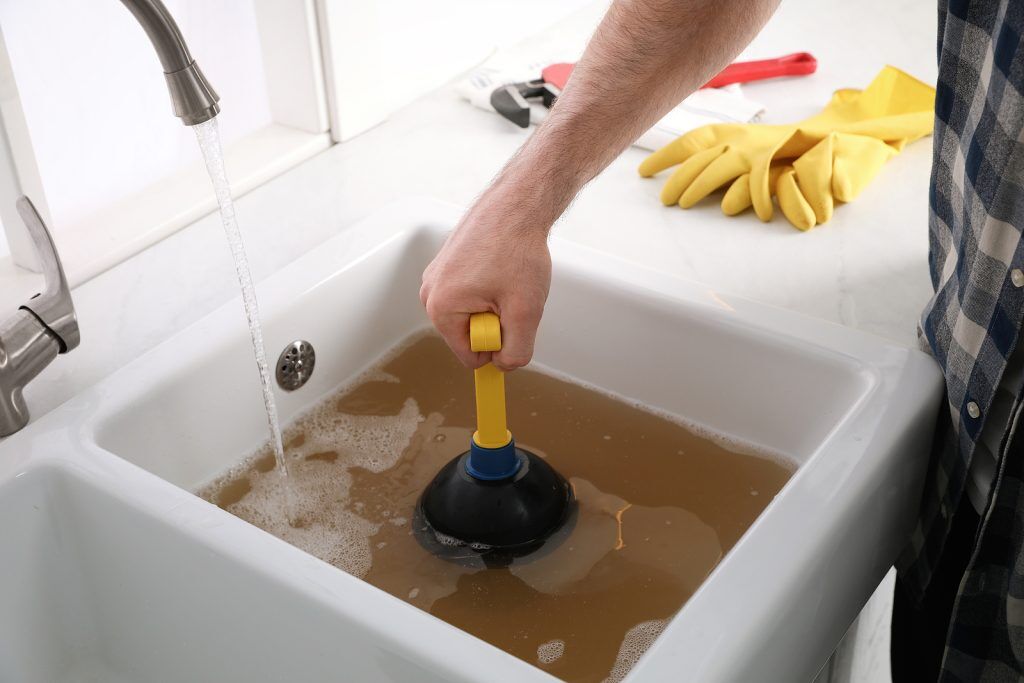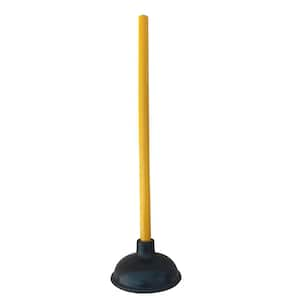Almost everyone is bound to have his or her own idea when it comes to How to Unclog Your Sink with a Plunger.

Intro
Appropriate upkeep of home drains is vital for protecting against clogs and ensuring smooth water circulation. Among the key tools in every homeowner's toolkit is the plunger, along with numerous drainpipe cleaners designed to deal with stubborn blockages effectively. This post discovers just how to utilize bettors and drainpipe cleansers properly to keep your drains flowing easily.
Section 1: Comprehending Bettors
Sorts of Plungers
There are several kinds of plungers readily available, each developed for different sorts of drains and blocks. One of the most usual kinds consist of mug bettors, flange plungers, and accordion plungers.
Exactly How Plungers Job
Plungers work with the principle of creating stress and suction to displace clogs. When appropriately used over a drainpipe, they develop a vacuum that can pull out particles or separate blockages.
Picking the Right Bettor
Picking the appropriate bettor depends on the type of drainpipe and the nature of the obstruction. Cup plungers are optimal for sinks and bathtubs, while flange plungers are better fit for commodes as a result of their layout.
Usual Mistakes with Plungers
Avoiding these errors ensures reliable plunging: incorrect seal around the drain, inadequate pressure, and unclear bordering debris.
Area 2: Making Use Of Plungers Successfully
Preparation
Prior to diving, guarantee the bettor covers the drainpipe totally and forms a limited seal. Clear any kind of noticeable debris around the drain opening.
Strategy
Beginning with mild plunging movements to build suction. Boost pressure progressively, using a steady rhythm. Repeat as needed up until the drainpipe gets rid of.
Troubleshooting Tips
If plunging doesn't work, try adjusting the seal, using oil jelly for a much better seal, or using a different type of plunger.
Area 3: Recognizing Drainpipe Cleaning Company
Sorts Of Drain Cleaning Company
Drain pipes cleansers can be chemical or chemical. Chemical cleansers use strong chemicals to dissolve blockages, while enzymatic cleaners make use of all-natural enzymes to break down raw material.
Exactly How Drainpipe Cleansers Job
Chemical cleansers respond with clogs to dissolve them, while chemical cleansers break down organic products like hair and grease without hurting pipes.
Safety and security Considerations
Always wear gloves and eye protection when utilizing chemical drain cleansers. Make certain appropriate air flow and adhere to manufacturer directions very carefully.
Eco-Friendly Alternatives
Think about utilizing vinegar and cooking soda or enzyme-based cleaners for green choices that are more secure for pipelines and the setting.
Section 4: Utilizing Drain Cleaners Efficiently
Application Methods
Put chemical cleansers straight right into the drain opening. Enable them to work for the advised time prior to flushing with warm water. Chemical cleaners must sit overnight.
Precautions
Prevent mixing various types of cleansers, as this can produce hazardous fumes. Never make use of chemical cleaners combined with a bettor, as spilling can happen.
Handling Stubborn Blockages
For persistent clogs, take into consideration using a plumbing serpent or calling an expert plumber to prevent damages to pipes.
Verdict
Finally, understanding just how to make use of bettors and drain cleaners properly is vital for preserving healthy plumbing systems. By choosing the right devices and methods, home owners can take on small clogs and avoid significant pipes problems down the line.
5 Steps on How to Use a Plunger Effectively
Creating a Seal: Place the rubber cup of the plunger firmly over the toilet drain hole to create an airtight seal. This seal is crucial to prevent air from escaping and ensure effective plunging.
Plunge Gently: Gently press the plunger down to compress the air inside without causing splashing. This careful action sets the stage for effective unclogging without creating a mess.
Maintaining Pressure: Consistently apply pressure to the plunger while pushing and pulling it up and down. This sustained pressure generates the force needed to dislodge the clog.
Breaking the Clog: Continue plunging until you feel the clog release. Look for the water to start draining, indicating successful removal of the blockage.
Flushing and Cleaning: After clearing the clog, flush the toilet to confirm it's working properly. Clean the plunger with warm, soapy water and disinfect it for future use to maintain hygiene.
Additional Tips on How to Correctly Use a Plunger
if you encounter resistance, add some water to the bowl to create better suction;
check the plunger for any rubber cracks to ensure it's in good condition;
exercise patience and persistence, as certain clogs might need multiple attempts.
Mistakes to Avoid when Using Toilet Plunger
avoid using excessive force, as it may damage the toilet;
don't rush the process; take your time to ensure a proper seal and pressure;
never use a plunger if you've recently used chemical drain cleaners
Conclusion
Mastering the art of how to properly use a plunger is a valuable skill for every homeowner. By employing the correct techniques, you can effectively address clogs and ensure your toilet functions smoothly. Patience, persistence, and proactive in maintaining your plunger's hygiene are key to success in this endeavor.
Armed with these skills and principles, you can confidently handle plumbing issues as they arise, promoting a well-functioning and hygienic home environment.
https://homealliance.com/blogs/how-to-effectively-use-a-plunger-the-ultimate-guide

Application Methods
Put chemical cleansers straight right into the drain opening. Enable them to work for the advised time prior to flushing with warm water. Chemical cleaners must sit overnight.
Precautions
Prevent mixing various types of cleansers, as this can produce hazardous fumes. Never make use of chemical cleaners combined with a bettor, as spilling can happen.
Handling Stubborn Blockages
For persistent clogs, take into consideration using a plumbing serpent or calling an expert plumber to prevent damages to pipes.
Verdict
Finally, understanding just how to make use of bettors and drain cleaners properly is vital for preserving healthy plumbing systems. By choosing the right devices and methods, home owners can take on small clogs and avoid significant pipes problems down the line.
5 Steps on How to Use a Plunger Effectively
Creating a Seal: Place the rubber cup of the plunger firmly over the toilet drain hole to create an airtight seal. This seal is crucial to prevent air from escaping and ensure effective plunging. Plunge Gently: Gently press the plunger down to compress the air inside without causing splashing. This careful action sets the stage for effective unclogging without creating a mess. Maintaining Pressure: Consistently apply pressure to the plunger while pushing and pulling it up and down. This sustained pressure generates the force needed to dislodge the clog. Breaking the Clog: Continue plunging until you feel the clog release. Look for the water to start draining, indicating successful removal of the blockage. Flushing and Cleaning: After clearing the clog, flush the toilet to confirm it's working properly. Clean the plunger with warm, soapy water and disinfect it for future use to maintain hygiene. Additional Tips on How to Correctly Use a Plunger
if you encounter resistance, add some water to the bowl to create better suction; check the plunger for any rubber cracks to ensure it's in good condition; exercise patience and persistence, as certain clogs might need multiple attempts. Mistakes to Avoid when Using Toilet Plunger
avoid using excessive force, as it may damage the toilet; don't rush the process; take your time to ensure a proper seal and pressure; never use a plunger if you've recently used chemical drain cleaners Conclusion
Mastering the art of how to properly use a plunger is a valuable skill for every homeowner. By employing the correct techniques, you can effectively address clogs and ensure your toilet functions smoothly. Patience, persistence, and proactive in maintaining your plunger's hygiene are key to success in this endeavor.
Armed with these skills and principles, you can confidently handle plumbing issues as they arise, promoting a well-functioning and hygienic home environment.
https://homealliance.com/blogs/how-to-effectively-use-a-plunger-the-ultimate-guide

I hope you liked our excerpt about . Thanks a lot for taking the time to browse our post. Are you aware of another person who is involved in the niche? Feel free to share it. I truly appreciate your readership.
Schedule Service Now